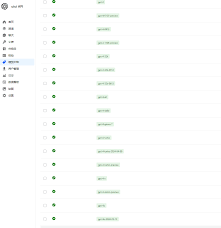How to Use GPT API with Python: Complete Guide with Examples and Free Resources
Ever wondered how to integrate the power of GPT into your Python applications? This guide will show you exactly how to do that! By the end, you’ll learn everything from setting up the OpenAI GPT API to running your own models, complete with examples and free resources.
Understanding how to use APIs, especially advanced ones like GPT-3.5 and GPT-4, is a crucial skill for both beginner and advanced developers as it opens up possibilities ranging from text generation and data summarization to creating conversational agents.
GPT API in Python is especially useful for automating tasks and enhancing applications with intelligent text generation and analysis. This article will cover step-by-step instructions, practical examples, common issues, and their solutions to help you start using GPT API efficiently.
Ready to integrate some cutting-edge AI into your Python projects? Let’s dive in!
Getting Started with OpenAI GPT API
Step 1: Sign Up and Get Your API Key
To get started, you’ll need to sign up for an account on the OpenAI platform. Once you’re signed in, navigate to the API keys page and create a new secret key. Keep this key safe as it’s your gateway to using the GPT API.
Step 2: Setting Up Python
Before you can use the API, you need to have Python installed on your system. Here’s how to quickly set up your environment:
- Install Python: Download and install Python from the
official website. - Create a Virtual Environment (optional): This helps keep your project dependencies isolated.
python -m venv venv source venv/bin/activate # On Windows use `venv\Scripts\activate` - Install the OpenAI package:
pip install openai
Step 3: Authenticating and Making Your First API Call
After setting up Python, you need to authenticate using your API key:
import openai
import os
openai.api_key = os.getenv("OPENAI_API_KEY")
response = openai.Completion.create(
model="text-davinci-003",
prompt="Hello, world!",
temperature=0.5,
max_tokens=100
)
print(response.choices[0].text)
This simple code snippet makes an API call to generate text based on the input prompt “Hello, world!”. Let’s explore what’s happening here:
- api_key: This is your secret key for accessing the API.
- model: Specifies which GPT model to use.
- prompt: Your input text.
- temperature: Controls the randomness in the output. Lower values make output more focused and deterministic.
- max_tokens: Limits the length of output in tokens (words and punctuation).

Advanced Usage and Optimization Tips
Now that you have the basics down, let’s move on to more advanced and optimized usage of the GPT API.
Handling Errors and Retries
API calls can fail for various reasons. It’s important to handle these gracefully:
try:
response = openai.Completion.create(
model="text-davinci-003",
prompt="Tell me a joke",
temperature=0.5,
max_tokens=50
)
print(response.choices[0].text)
except openai.OpenAIAPIError as e:
print(f"Error occurred: {e}")
Optimizing Costs
Using the GPT API comes with costs, so it’s wise to optimize your usage:
- Batch requests: Process multiple prompts in a single API call.
- Use narrower models if suitable: Models like gpt-3.5-turbo might be cheaper and faster for certain tasks.
- Control output size: Limiting max_tokens can help reduce costs.
Free Resources for Learning and Experimenting
To help you get started without burning a hole in your pocket, here are some free resources:
- OpenAI Playground: A web-based tool to test API calls before implementing them in your code. You can access it
here. - Free API Credit: OpenAI provides free credits for initial usage. You can find more information on their pricing page.
- Tutorials and Documentation: The
OpenAI API documentationis an excellent resource for detailed tutorials and references.
FAQ: Common Questions About Using GPT API with Python
Here are some frequently asked questions to help you further:
Q1: What’s the difference between GPT-3.5 and GPT-4?
GPT-4 is expected to be more powerful and capable than GPT-3.5, with improvements in understanding context and generating more accurate responses. However, it might come at a higher cost.
Q2: How do I control the output quality?
The temperature parameter is your friend. Use lower values (e.g., 0.1) for more deterministic and focused outputs, and higher values (e.g., 0.7) for more creative and varied outputs.
Q3: Can I use the API offline?
No, the OpenAI GPT API requires an internet connection to send requests and receive responses from the OpenAI servers.
Q4: How do I send large input data?
For larger inputs, consider breaking them into smaller chunks or using embeddings to handle them efficiently.
Q5: Can I fine-tune GPT models?
Yes, OpenAI provides options for fine-tuning models to better fit your specific use case. Check their fine-tuning guide for detailed instructions.
Summary and Next Steps
In this comprehensive guide, you’ve learned how to use the GPT API with Python, from setting up your environment and making your first API call to handling advanced features and optimization tips. By integrating GPT models, you can supercharge your applications with advanced natural language processing capabilities.
Don’t stop here! Experiment with the examples provided and check out the OpenAI Playground and documentation for further exploration. Remember, practice makes perfect. Happy coding!
Ready to take your AI skills further? Try exploring more complex use cases or fine-tuning your models to match your specific needs. The world of AI is vast and full of opportunities!

